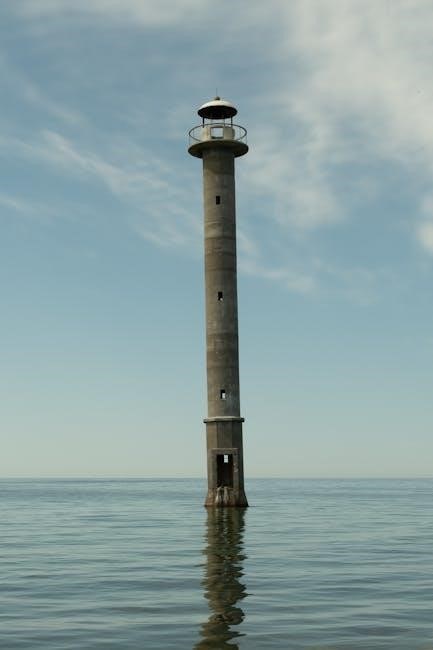The Ames Letter Guide is a versatile drafting tool designed to create uniform lettering and precise alignments, essential for architects, engineers, and graphic designers. It’s affordable, durable, and widely used in blueprinting and technical drawings.
1.1 What is the Ames Letter Guide?
The Ames Letter Guide is a specialized drafting tool designed to help create precise, uniform lettering and spacing in technical drawings. It features a series of carefully spaced holes that guide letters and lines, ensuring consistency. The tool is compact, durable, and affordable, making it a favorite among architects, engineers, and graphic designers. Its simplicity and versatility allow users to achieve professional-quality results efficiently. The guide is particularly valued for its ability to maintain uniform spacing and alignment, making it indispensable in blueprinting and technical documentation. It is a timeless aid in precision drafting.
1.2 Historical Background and Development
The Ames Letter Guide has its roots in traditional drafting practices, emerging as a essential tool for precise lettering and alignment. Developed to meet the needs of architects, engineers, and technical drawers, it has evolved over time while retaining its core functionality. Originally designed to simplify the process of creating uniform lettering, the guide has become a staple in drafting kits worldwide. Its enduring popularity reflects its ability to deliver consistent results, making it a trusted companion for professionals across generations. The tool’s design has remained largely unchanged, testament to its timeless utility.
1.3 Importance of the Ames Letter Guide in Drafting
The Ames Letter Guide is indispensable in drafting for its ability to ensure precision and consistency in lettering and spacing. By providing uniform guidelines, it enhances the readability and professionalism of blueprints, technical drawings, and architectural plans. This tool is particularly valued for its simplicity, durability, and cost-effectiveness, making it accessible to both students and professionals. Its role in maintaining accuracy and streamlining workflows has solidified its place as a fundamental instrument in the drafting process, contributing to the creation of clear and effective visual communications.
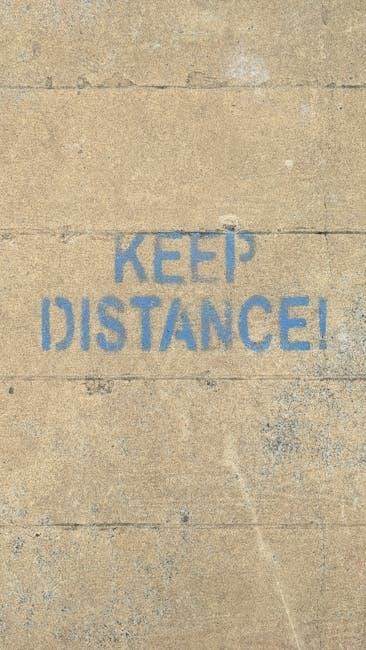
Key Features and Components
The Ames Letter Guide features a durable design with multiple holes and markings for precise lettering and alignment. Its adjustable mechanism allows customization for various drafting needs, ensuring accuracy and consistency in creating parallel lines and uniform spacing. This tool is lightweight, easy to use, and designed for long-lasting performance, making it an essential asset for professionals and students alike in technical drawing and blueprinting.
2.1 Design and Construction of the Ames Letter Guide
The Ames Letter Guide is crafted with precision, featuring a durable, lightweight design that ensures longevity. Its compact structure includes multiple holes and markings strategically placed to facilitate accurate lettering and alignment. The tool’s construction allows for easy handling and portability, making it ideal for both professional and educational settings. Its simplicity and robust build contribute to its effectiveness in various drafting tasks, ensuring consistent results with minimal effort.
2.2 Holes and Markings: Understanding Their Purpose
The Ames Letter Guide features a series of carefully designed holes and markings that serve specific purposes. These markings are strategically placed to help users achieve precise letter spacing, alignment, and uniformity. The holes correspond to various letter heights and spacing intervals, allowing drafters to maintain consistency in their work. The markings guide the placement of letters and lines, ensuring accuracy and reducing errors. This thoughtful design makes the tool indispensable for creating professional-grade drawings and blueprints efficiently.
2.3 Adjustability and Customization Options
The Ames Letter Guide offers remarkable adjustability and customization, catering to diverse drafting needs. Users can modify the spacing intervals to suit specific projects, ensuring flexibility. The guide allows for precise alignment adjustments, accommodating various letter sizes and styles. This adaptability makes it a versatile tool for architects, engineers, and designers, enabling them to tailor their work to exacting standards. The ability to customize enhances productivity, making the Ames Guide a reliable choice for achieving professional-grade results in technical and artistic applications.

How to Use the Ames Letter Guide
Position the Ames Guide on your paper, aligning it with your desired writing area. Use the pre-drilled holes to draw consistent guidelines for lettering. Trace along the edges to maintain uniform spacing and straight lines, ensuring precision in your work.
3.1 Setting Up the Guide for Drafting
To set up the Ames Letter Guide, align it with the edge of your paper or drawing surface. Ensure the guide is straight and secure to prevent shifting during use. Adjust the guide according to your project’s requirements, such as letter spacing or line intervals. Use the built-in markers or adjustable features to customize the setup for precise alignments. Properly positioning the guide ensures consistency and accuracy in your drafting work, making the process efficient and professional.
3.2 Drawing Parallel Lines and Spacing
The Ames Letter Guide excels at drawing parallel lines and maintaining consistent spacing. By aligning the guide with your desired interval, you can create evenly spaced lines for text or diagrams. Adjust the spacing markers to customize the distance between lines, ensuring uniformity across your work. This feature is particularly useful for technical drawings, blueprints, and lettering, where precision is key. Use a pencil or marker to trace along the guide, achieving professional-grade results with minimal effort and maximum accuracy.
3.3 Creating Consistent Lettering and Alignment
The Ames Letter Guide ensures consistent lettering and alignment by providing uniform spacing and straight-edge guidance. Its precision-engineered holes and markings allow users to maintain consistent letter heights and spacing, essential for professional drafting. By aligning the guide with your work, you can achieve perfectly straight lines and evenly spaced text, enhancing readability and presentation. This tool is indispensable for technical drawings, blueprints, and architectural plans, where consistency is critical for clear communication and accuracy.

Tips for Optimal Use
To optimize the Ames Guide, select suitable tools for lettering, maintain accuracy, and avoid common mistakes. Proper setup and alignment are crucial for precise results. Regular cleaning ensures longevity.
4.1 Choosing the Right Tools for Lettering
Choosing the right tools for lettering is crucial for achieving professional results with the Ames Guide. Use high-quality technical pens or fine-tip markers to ensure sharp, consistent lines. Pencils with hard leads are ideal for initial drafts, while erasers and sharpeners help maintain precision. Pairing the guide with a straightedge or ruler enhances alignment accuracy. Proper tool selection ensures clean, readable lettering and precise spacing, making your work stand out in technical drawings and blueprints.
4.2 Maintaining Accuracy and Precision
Maintaining accuracy and precision with the Ames Letter Guide requires careful alignment and consistent technique. Always ensure the guide is firmly secured to the drawing surface to prevent shifting. Use a straightedge or ruler to double-check alignments, especially for complex layouts. Regularly clean the guide to avoid dust or debris interfering with its performance. Practice steady hand movements and apply even pressure to achieve uniform lettering and spacing. By adhering to these practices, you can ensure professional-grade precision in every project.
4.3 Common Mistakes to Avoid
When using the Ames Letter Guide, avoid common mistakes such as improper alignment, uneven pressure, and ignoring spacing guidelines. Misalignment can lead to crooked lines and inconsistent lettering. Applying too much pressure may damage the guide or cause markings to slip. Neglecting the spacing indicators can result in overcrowded or uneven text. Additionally, failing to clean the guide regularly can introduce errors due to dust or debris. Always double-check your setup and technique to ensure accurate and professional results. Proper care and attention to detail are key to mastering the Ames Letter Guide effectively.

Applications Across Different Fields
The Ames Letter Guide is a versatile tool used in drafting, technical drawing, architecture, engineering, graphic design, and blueprinting. It aids in creating precise lettering and alignments essential for professional documents and designs.
5.1 Use in Architecture and Engineering
The Ames Letter Guide is indispensable in architecture and engineering for creating precise, uniform lettering and alignments. Architects use it to draft blueprints with consistent spacing and clarity, ensuring readability. Engineers rely on its accuracy for technical drawings and schematics. The tool’s ability to produce evenly spaced parallel lines makes it ideal for large-scale plans and detailed diagrams, maintaining professional standards in both fields. Its durability and simplicity ensure it remains a staple in drafting workflows.
5.2 Applications in Graphic Design and Art
The Ames Letter Guide is a valuable tool in graphic design and art, offering precise control over lettering and spacing. It enables designers to create uniform typography and alignments with ease. Artists use it for hand-drawn fonts, calligraphy, and mixed-media projects, ensuring consistency and professionalism. Its portability and simplicity make it ideal for both studio and fieldwork, allowing creators to achieve high-quality results without relying on digital tools. This makes the Ames Guide a timeless asset in various artistic and design workflows.
5.3 Role in Technical Drawing and Blueprinting
The Ames Letter Guide is indispensable in technical drawing and blueprinting, ensuring precise lettering and uniform spacing. It helps drafters maintain consistency across large-scale projects. By allowing quick creation of parallel lines and accurate spacing, it streamlines the blueprinting process. Its durability and affordability make it a staple in technical workflows. This tool is particularly valued for its ability to enhance clarity and readability in complex designs, making it a trusted companion for professionals in architecture and engineering fields.
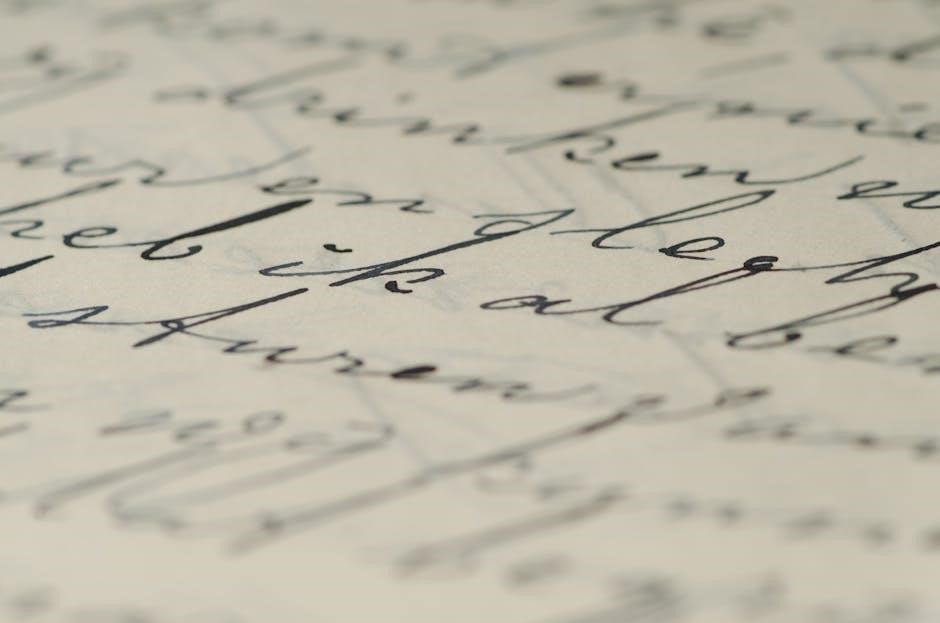
Modern Alternatives and Comparisons
While digital tools offer advanced features, the Ames Letter Guide remains a reliable, cost-effective option for precise lettering and alignment, favored for its simplicity and tactile accuracy.
6.1 Digital Tools vs. Traditional Ames Guide
Digital tools like CAD software offer advanced features for lettering and alignment, enabling scalability and automation. However, the Ames Guide excels in providing tactile precision and consistency, making it indispensable for manual drafting. While digital tools suit complex, large-scale projects, the Ames Guide remains a preferred choice for its simplicity, cost-effectiveness, and ability to deliver uniform results without reliance on technology. This comparison highlights the coexistence of traditional and modern methods, each catering to different drafting needs and preferences.
6.2 Advantages of the Ames Guide Over Digital Tools
The Ames Guide offers unmatched precision and consistency in manual drafting, ensuring uniform lettering and alignments without the need for complex software. Its portability and durability make it ideal for fieldwork, while its simplicity eliminates the learning curve associated with digital tools. Cost-effective and reliable, the Ames Guide remains a staple in industries where traditional drafting methods are valued. It provides a tactile experience that many professionals prefer, making it an essential tool alongside modern technologies.
6.3 When to Choose the Ames Guide
The Ames Guide is ideal for situations requiring precise, manual drafting without reliance on electricity or software. It excels in fieldwork, where portability and simplicity are crucial. For quick adjustments and consistent lettering, it offers unparalleled ease of use. Additionally, it’s cost-effective for small-scale projects or educational settings, making it a practical choice for both professionals and students. Its tactile nature also appeals to those who prefer traditional drafting methods, ensuring accuracy and control in technical drawing and blueprinting applications.
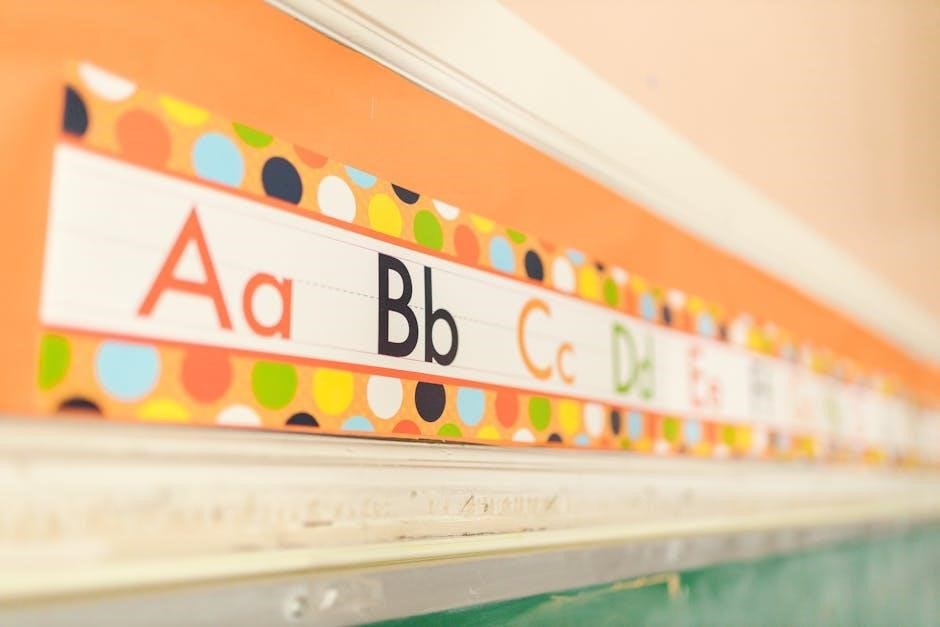
Maintenance and Care
Regular cleaning with a soft cloth and mild detergent prevents ink buildup. Store in a protective case to avoid dust and damage. Handle with care to prevent bending or warping. Check for wear and tear regularly and replace parts as needed to extend lifespan.
7.1 Cleaning and Storing the Ames Guide
Clean the Ames Guide with a soft cloth and mild detergent to remove ink and dust. Avoid harsh chemicals or abrasive materials that could damage the surface. Store it in a protective case or dry place to prevent rust and dust accumulation. Regular maintenance ensures longevity and precision. Always handle with care to avoid bending or warping. Proper storage and cleaning routines are essential for maintaining the guide’s accuracy and performance over time.
7.2 Repairing and Replacing Parts
The Ames Guide is durable, but occasional repairs may be needed. Minor adjustments can be made using screwdrivers to tighten loosened parts. Worn-out components, like hinges or screws, can be replaced with compatible spare parts. For major damage, consult the manufacturer or a professional. Regular inspection helps prevent breakdowns. Always use genuine replacement parts to maintain precision and functionality. Proper care ensures the guide remains accurate and reliable for years of consistent use.
7.3 Extending the Lifespan of the Guide
Regular maintenance is key to extending the lifespan of the Ames Letter Guide. Clean it with a soft cloth and mild soap to remove dirt and oils. Store it in a dry, flat surface to prevent warping. Avoid exposure to harsh chemicals or abrasive materials. Inspect the guide periodically for wear and tear, addressing issues early to prevent damage. By handling it with care and following these steps, you can ensure your Ames Guide remains precise and functional for years of reliable use.

Troubleshooting Common Issues
Common issues with the Ames Guide include misalignment and uneven surface contact. Recalibrate by adjusting the guide’s base or using shims for stability to ensure accuracy and precision.
8.1 Aligning the Guide Correctly
Aligning the Ames Letter Guide correctly is crucial for accurate results. Ensure the base is flat on the drafting surface and adjust the guide’s positioning to avoid wobbling. Use a ruler or straightedge to verify alignment with your drawing’s edges or grid lines. If the guide slips, secure it with drafting tape or a non-slip mat. Proper alignment prevents uneven lettering and ensures consistent spacing, saving time and improving the overall quality of your work. Regularly check and recalibrate for optimal performance.
8.2 Dealing with Uneven Surfaces
Uneven surfaces can hinder the Ames Letter Guide’s performance. To address this, place a sturdy, flat drafting pad or cardboard beneath the guide to stabilize it. Use shims or thin pads to level the surface if necessary. Ensure the guide is securely positioned to prevent slipping. For extreme unevenness, consider using a non-slip mat or adjusting your workspace. Proper stabilization ensures consistent lettering and alignment, even on challenging surfaces, maintaining the tool’s effectiveness and your drafting accuracy.
8.3 Handling Wear and Tear
Regular maintenance is key to extending the lifespan of the Ames Letter Guide. Clean the guide periodically with a soft brush or compressed air to remove dust and debris from the holes. For metal edges, lightly sand with fine-grit sandpaper to prevent dulling. Avoid using harsh chemicals, as they may damage the material. Store the guide in a protective case when not in use to prevent scratches. Inspect the guide regularly for signs of wear, such as bent edges or clogged holes, and address these issues promptly to ensure optimal performance and accuracy in your drafting work.

The Ames Guide in Educational Settings
The Ames Letter Guide is a valuable educational tool for teaching drafting and technical drawing skills. It helps students create precise, uniform lettering and alignments, enhancing their drafting accuracy and consistency. Educators often incorporate the guide into curriculum to familiarize students with professional drafting techniques, making it an indispensable resource for both classrooms and hands-on projects.
9.1 Teaching Drafting Techniques
The Ames Letter Guide is an essential tool for teaching drafting techniques, enabling students to master precise lettering and alignment skills. It simplifies the process of creating uniform spacing and parallel lines, which are critical in technical drawing. Educators use the guide to demonstrate how to maintain consistency in blueprints and architectural designs. By incorporating the Ames Guide into curriculum, students gain hands-on experience with professional drafting methods, enhancing their ability to produce accurate and visually appealing work. This practical training prepares them for real-world applications in various fields.
9.2 Student Projects Using the Ames Guide
The Ames Guide is often integrated into student projects to enhance drafting accuracy and creativity. Many assignments involve using the guide to create precise lettering and alignment in technical drawings, architectural plans, and graphic designs. Students utilize the tool to produce uniform spacing and parallel lines, essential for professional-grade work. Projects range from detailed blueprints to artistic posters, with the guide enabling customization of lettering ratios and x-heights. This hands-on experience helps students master technical skills while exploring creative design possibilities, preparing them for real-world applications in drafting and design fields.
9.3 Incorporating the Guide into Curriculum
Incorporating the Ames Letter Guide into educational curricula enhances technical drawing and drafting skills. It is introduced early in design courses to teach precise lettering, alignment, and spacing. Students learn to use the guide for creating uniform blueprints and technical illustrations. This hands-on tool helps develop foundational drafting skills, preparing learners for professional environments. Its simplicity and effectiveness make it a valuable resource for both beginner and advanced students, ensuring they master essential techniques for accurate and professional-grade documentation.
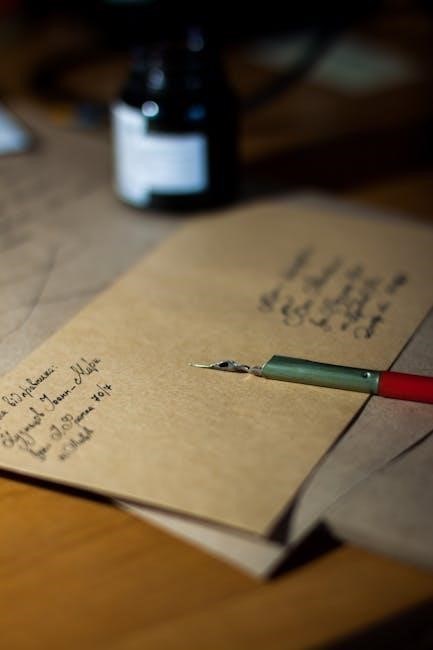
The Future of the Ames Letter Guide
The Ames Letter Guide may evolve with hybrid tools combining traditional drafting with digital features, ensuring its relevance in modern design workflows while retaining its core functionality.
10.1 Evolving Trends in Drafting Tools
Drafting tools are transitioning from analog to digital, with software like CAD dominating modern workflows. However, traditional tools like the Ames Letter Guide remain popular for precision and tactile creativity. Hybrid solutions combining physical guides with digital overlays are emerging, offering the best of both worlds. As sustainability becomes a focus, eco-friendly materials may influence future designs. The Ames Guide’s adaptability to these trends will ensure its continued relevance, bridging the gap between classic drafting techniques and innovative technological advancements in the design industry;
10.2 Potential Innovations and Upgrades
Future innovations for the Ames Letter Guide may include laser-engraved markings for enhanced precision, adjustable spacing mechanisms, and integration with digital tools. Eco-friendly materials could replace traditional metals, aligning with sustainability trends. Additionally, customizable templates and interchangeable plates might be introduced to cater to specific industries. A digital companion app for real-time alignment feedback could also be developed, enhancing usability without compromising the tool’s classic appeal. These upgrades aim to modernize the guide while preserving its core functionality and timeless design.
10.3 Ensuring Relevance in a Digital Age
While digital tools dominate drafting, the Ames Letter Guide remains relevant by offering tactile precision and simplicity. Its ability to create consistent lettering and alignments without relying on software makes it a preferred choice for educators and professionals alike. By emphasizing its unique benefits and integrating with modern workflows, the guide can continue to be a valuable asset in both traditional and digital drafting environments, ensuring its longevity and adaptability in an ever-evolving industry landscape.
